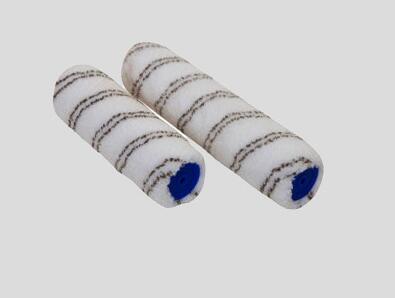Are you embarking on a painting project and wondering which type of paint roller to use? Look no further! In this detailed guide, we'll explore the different types of paint rollers available in the market, their unique characteristics, and the best applications for each. Whether you're a seasoned DIY enthusiast or a professional painter, understanding the nuances of paint rollers can make a significant difference in the outcome of your project.

Paint rollers come in various shapes, sizes, and materials, each designed to cater to specific painting needs. Let's delve into the different types:
Nap lengths refer to the thickness of the roller's fibers. They play a crucial role in determining the roller's suitability for different surfaces and paint types.
Short nap rollers, typically ranging from ⅛ to ¼ inch, are ideal for smooth surfaces like walls and ceilings. They are perfect for applying paint evenly without leaving behind texture.
Short nap rollers ensure a sleek finish, making them the go-to choice for interior painting projects where a smooth surface is desired.
Medium nap rollers, with nap lengths between ⅜ to ½ inch, are versatile options suitable for a wide range of surfaces, including textured walls and drywall.
These rollers provide excellent coverage and are capable of holding more paint, making them efficient for larger areas and rougher surfaces.
Long nap rollers, boasting nap lengths of ¾ inch or more, are designed for heavily textured surfaces such as stucco or brick.
Their longer fibers allow them to reach into crevices and irregularities, ensuring thorough coverage and a consistent finish even on the most challenging surfaces.
Paint rollers are available in different materials, each offering unique benefits in terms of durability, absorption, and finish quality.
Synthetic rollers, made from materials like Polyester Paint Roller or nylon, are known for their durability and resistance to shedding.
These rollers are suitable for use with both oil-based and latex paints, providing smooth application and easy cleanup.
Foam rollers consist of a foam sleeve attached to a handle and are ideal for smooth surfaces like cabinets, doors, and trim.
They produce a smooth, bubble-free finish and are particularly useful for applying varnishes and clear coats.
Microfiber rollers feature densely packed fibers that hold more paint and release it evenly onto the surface.
These rollers are excellent for achieving a smooth, lint-free finish on walls and ceilings, making them a popular choice among professional painters.
In addition to nap lengths and materials, there are specialty rollers designed for specific purposes, such as:
Texture rollers are used to create decorative effects, such as stippling or stippled textures, on walls and ceilings.
They come in various patterns and designs, allowing you to customize the look of your space with ease.
Trim rollers, also known as mini rollers, are small in size and perfect for painting trim, edges, and tight spaces.
They offer precision and control, enabling you to achieve crisp lines and seamless transitions between surfaces.
Decorative rollers feature intricate patterns and designs, allowing you to add artistic flair to your walls and furniture.
They are an excellent choice for accent walls, furniture refinishing, and other creative projects.
Choosing the right paint roller is essential for achieving professional-quality results in your painting projects. By understanding the various types of paint rollers available and their unique characteristics, you can select the perfect tool for the job and ensure a flawless finish every time.
Previous: What are the different kinds of paint rollers and their usages?
Next: None.
Copyright:@2020-2021
Comments Please sign in or sign up to post.
0
0 of 500 characters used